Imagine you just freshly baked a beautiful loaf of bread and the aroma has filled the air in your home. With guests waiting to be served, you hurriedly grab the closest knife in your reach. As you start cutting into the loaf, it starts crumbling to pieces, leaving you in a state of horror!
Only if you had used a serrated utility knife, you could have saved yourself this embarrassment. From cutting sandwiches effortlessly to slicing soft cakes, these saw-toothed knives can be a lifesaving marvel in the kitchen.
Serrated utility knife uses:
- Serrated utility knives can be used for thin slicing of foods that have a crisp exterior and a soft interior like bread, cakes and baked turkey.
- Easily cut through fruits and vegetables like tomatoes and persimmons that have firm skin and soft interior to get perfect slices each time.
- Fruits with hard exteriors like watermelon, pineapple and winter squash can be easily sliced, chopped and peeled with the help of the long blade of a serrated knife.
We will talk more in detail about the amazing serrated utility knife uses later on in the article, but first let’s find out what a serrated blade is.
Table of contents
What’s a serrated knife?
A type of knife that has a sharp edge between 4 and 6 inches long with tooth-like or saw-like edges. Serrated knives are also known as toothed knives. This knife is effective at making cuts on food surfaces that have a rigid outer portion and soft or juicy inner portions. For example, serrated utility knives quickly and cleanly cut through soft loaves of bread with no effort.
What are the uses of a serrated utility knife?
The serrated utility knife is widely used for slicing everything perfectly, from natural juicy fruits and vegetables to baked items like cake and loaves of bread. In this article, we will be explaining in detail how to use a serrated utility knife and how we can benefit from this effortless utility knife.
Serrated utility knives are the best option for cutting through thick outer surface foods without the mess. Their clouds-shaped gullets go deep and make a perfect cut through the food without consuming your time and effort.
Cakes and bread

Every time you cut a cake, you wonder how the professional bakers and chefs do it so nicely. A serrated blade is the secret to this achievement. The serrated utility knife slices through the hard-crusted bread with a soft inner portion effortlessly.
It does not squash and crumble the loaves of bread while cutting through the sharp gullets. For this reason, serrated utility knives are the perfect choice for moist cakes, delicate pastry, rigid surface bread, and slicing nougat.
Tip
- The best way to slice the cake or bread without crushing it is with a serrated utility knife in a sawing motion.
Tomatoes
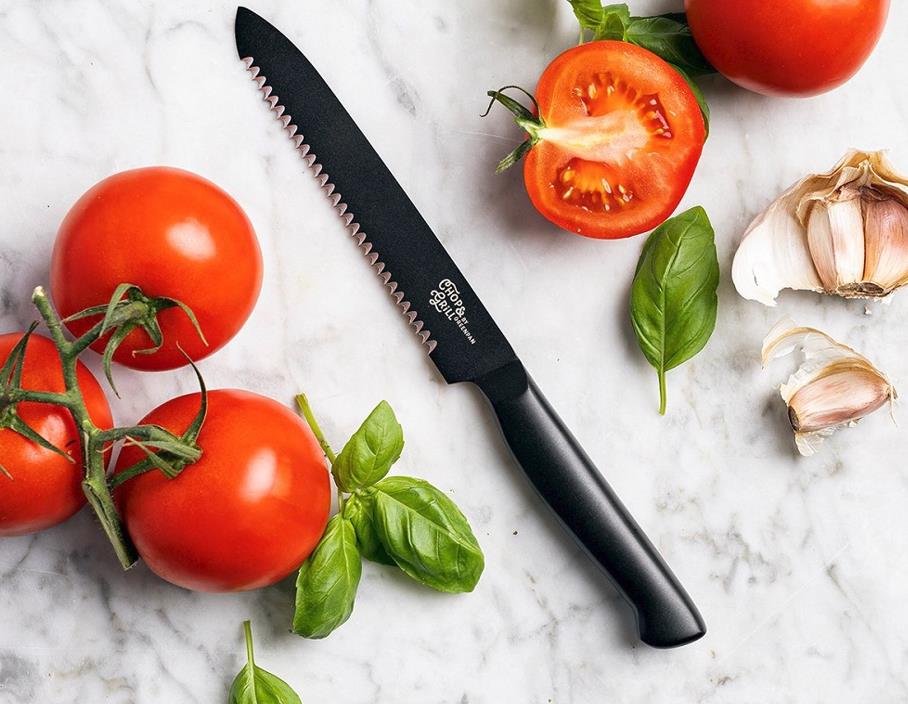
A serrated knife cuts through thick tomato skin without applying pressure to the juicy interior portion in the blink of an eye. To make thin, attractive slices, lay the tomato in a horizontal position and use a serrated knife to slice it.
Tip
- Sink the serrated knife into the upper part of the tomato and move it back and forth to cut it perfectly.
Pineapple

Pineapple is one of the hard-skinned fruits in the world. To cut the pineapple quickly and cleanly, you need to position it correctly. First, place the pineapple on its side, and remove both the top and lower portion. Then hold it vertically and use a serrated knife to make perfect slices and remove the skin within a minute.
Tip
- If you wish to remove the core of the pineapple, first split the pineapple in half with the help of a serrated knife. Next use an apple core to remove the core. It may take a few attempts to remove it completely.
Watermelon
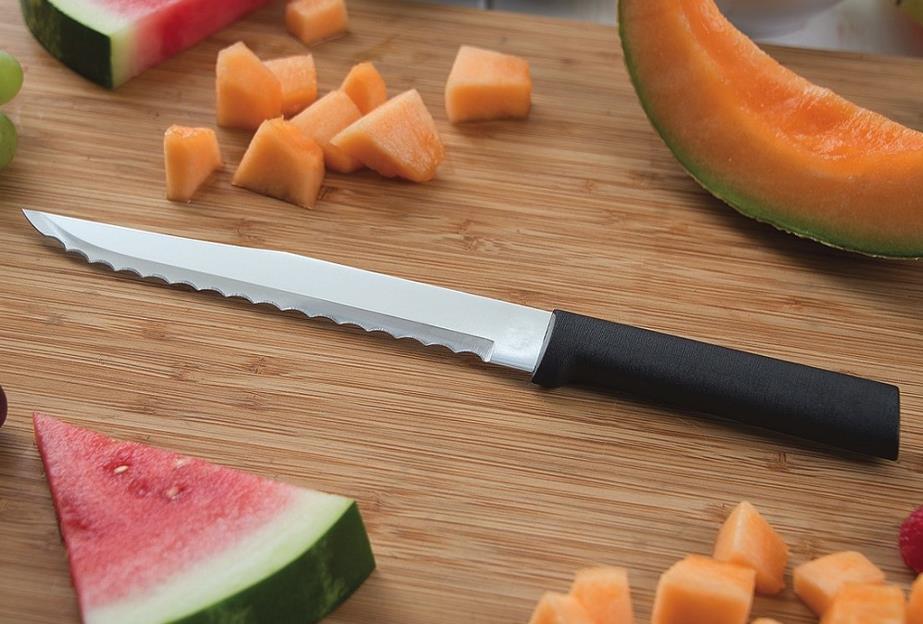
A serrated knife helps to cut the thick-skinned watermelon easily. In addition, you will be able to peel off the skin of any kind of melon or winter squash within a matter of seconds as compared to a plain edge knife.
Tips
- Hold the knife at an angle and use a sawing motion to dig into the hard peel of the watermelon.
- First cut the watermelon in half, then cut into the desired shape.
Citrus fruits
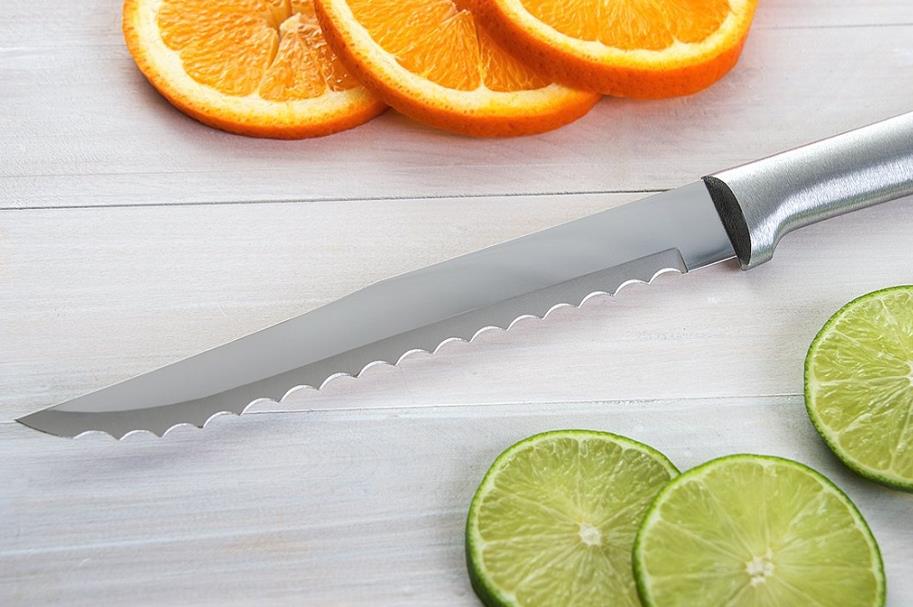
The skin of citrus fruits is hard and smooth, and it is a complicated task to cut them with a plain edge knife. For this purpose, the serrated utility knife comes into play and makes the job easy for you.
Tips
- Serrated utility knives are the best option to cut thin slices of citrus fruits for garnishing drinks.
- Place the citrus fruit on a cutting board and first cut the ends.
- Hold the fruit at one end firmly, and begin slicing thinly at the other end.
Steak
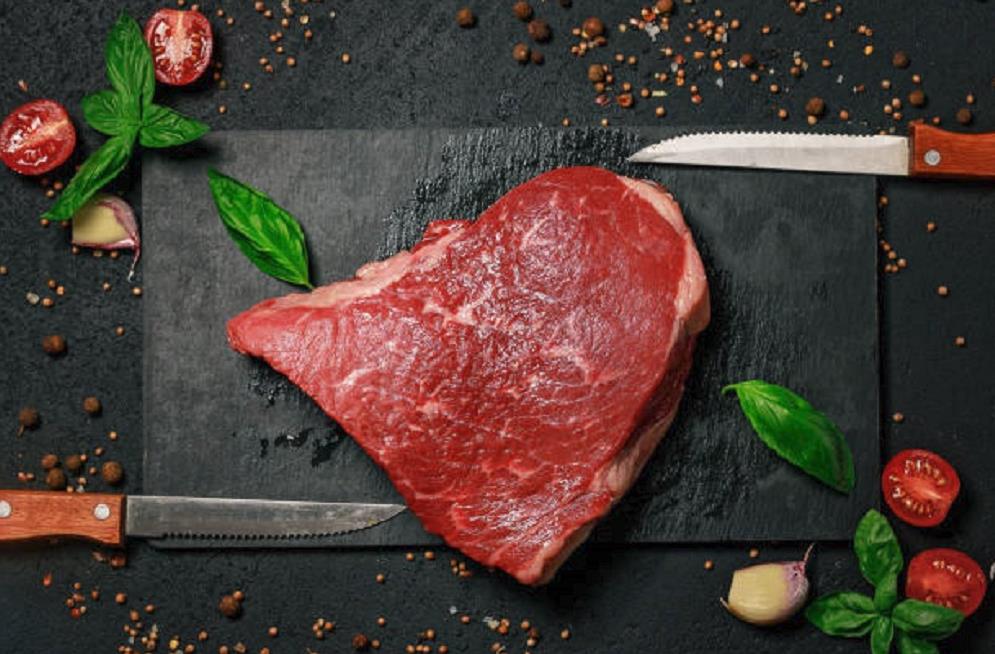
Serrated utility knives are served with steak or any kind of meat at restaurants. Because of the serrated edges, the saw-like knife perfectly cuts the steak professionally. These are the reasons you always need a serrated utility knife in your kitchen with a cutlery set.
Tip
- When cutting raw steak, make sure to cut the meat perpendicular to the fibers. This will make it easier to chew once cooked.
Serrated utility knife vs regular plain edge knife
The chef’s knife or plain edge knife has a continuous blunt and thick edge. These regular plain edge knives are helpful in chopping and push cutting. Unlike serrated knives, plain edge knives cannot make thin slices perfectly. Slice cuts are usually used for slicing bread, cakes, steak, or rope.
The serration goes deep into the fibrous materials and allows a quick and clean cut with no tearing of fibers. In addition, the serrated edge of the blade does not slip out of cuts as readily as a plain edge blade. Therefore, it will be good for you if you do not ignore the importance of using a serrated utility knife in your kitchen.
Plain edge knives require proper sharpening of the blade every time you use them for any hard object. On the other hand, serrated knives do not need sharpening too often. Even when the teeth or saw-like edges become rough, they can still slice bread or cut soft fruits into slices. It is sufficient to sharpen the blades of serrated knives once every six months or so.
Handpicked for you
True cutting power in the palm of your hand
Serrated utility knife vs bread knife
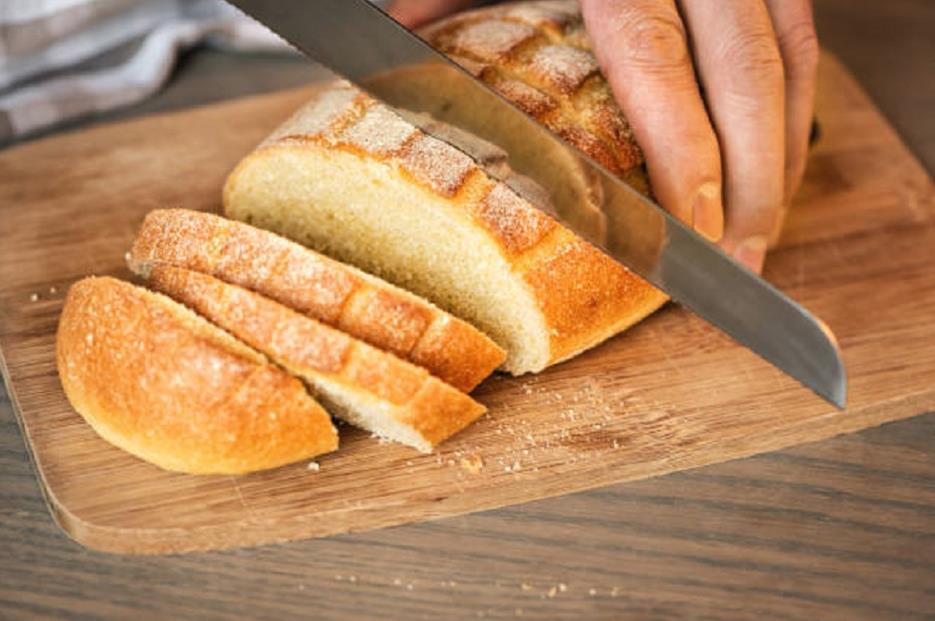
A bread knife is a longer and thicker version of a serrated utility knife. In particular, bread knives are designed to cut through bread, soft cakes, pastries, sandwiches, and nougat without shredding. The serrated utility knife is shorter than a bread knife. It is suitable for juicy fruits with soft inner portions and is challenging to cut.
Serrated knives hold the object in the sharp teeth-like edges and allow you to cut it into slices cleanly. Serrated utility knives are easy to use and clean.
How to care for a serrated utility knife
A serrated utility knife does not need proper maintenance and care, but still, we need to be familiar with handling it for our ease and safety.
Cleaning
Serrated utility knives are easy to clean. When made from good stainless steel, they can be washed in the dishwasher. If you prefer to hand wash, avoid keeping the serrated knife in water for a long time, as water makes the blades dull and may damage the wooden handles.
Storing
There are several ways you can store your serrated utility knives: in a magnetic knife holder, on a wall-mounted magnetic knife strip, or in-drawer storage. However, the recommended storage option for serrated knives is a magnetic knife holder, in terms of both access and safety.
Sharpening
Although serrated blades do not dull easily, they may need to be sharpened every now and then. The method to sharpen a serrated utility knife is different from knives that have a straight blade. Each beveled serration on this type of knife needs to be sharpened separately. The tool used to perform this task is the honing rod.
FAQs on serrated utility knife uses
Why should you own a serrated knife?
A serrated knife plays an essential role in providing a clean and perfect cut through soft and juicy fruits with hard outer coverings, like watermelons and pineapples. Moreover, it helps in slicing bread and cakes in a professional way.
If you try to slice bread with a plain edge knife, you will appreciate the presence of a serrated knife. This is because a serrated knife has simplified the way of cutting bread, soft cakes and other food items that are prone to shredding.
Do blade dimension and tip matter for a perfect slice?
Definitely, the long blade with a wedge-shaped tip of a serrated knife is ideal for cutting foods of all sizes efficiently and comfortably.
What are a few advantages of a serrated utility knife?
Serrated blades cut the food item with constant pressure and make the task easier. In addition, they remain sharp and work appropriately for a long time compared to plain edge knives.
Now that you are quite familiar with serrated utility knife uses, learn how to cut and pull apart a pineapple effortlessly with one right here. Happy cutting!












